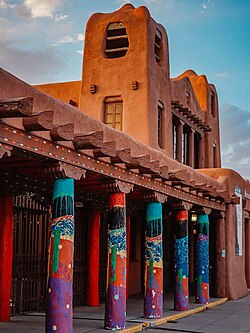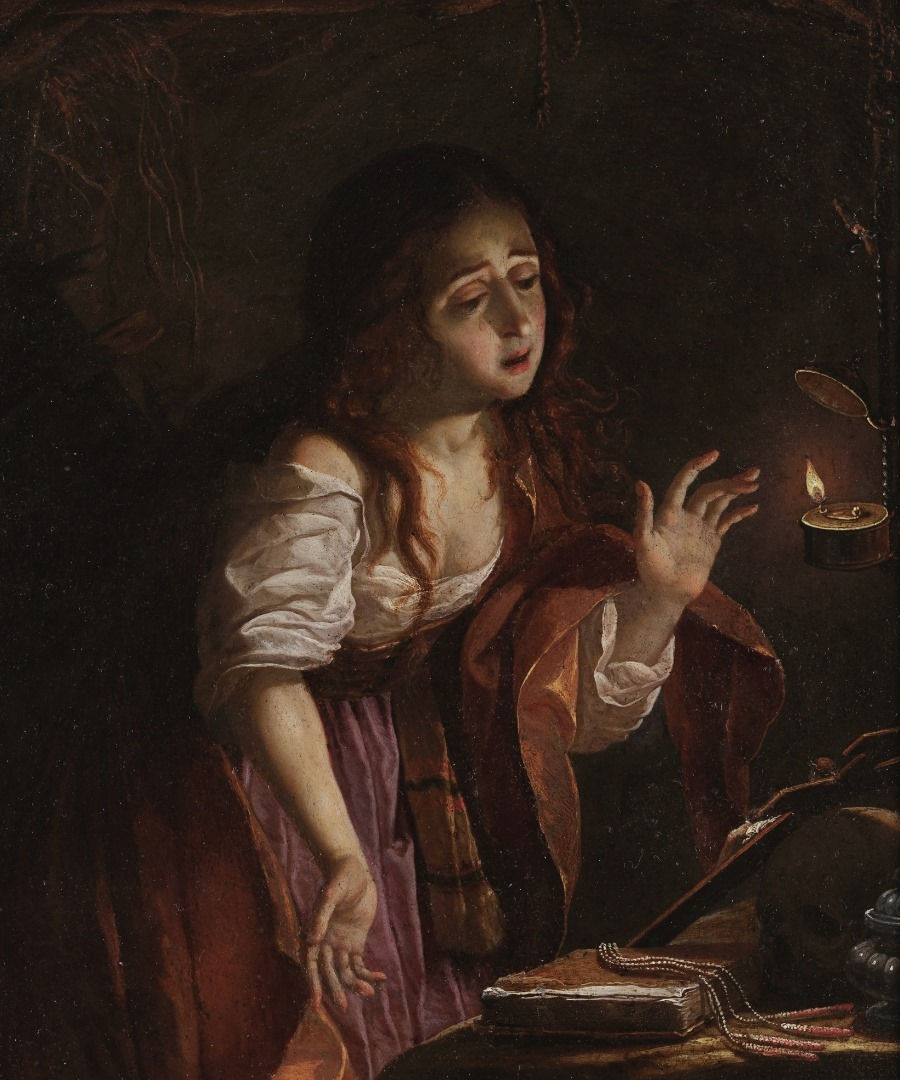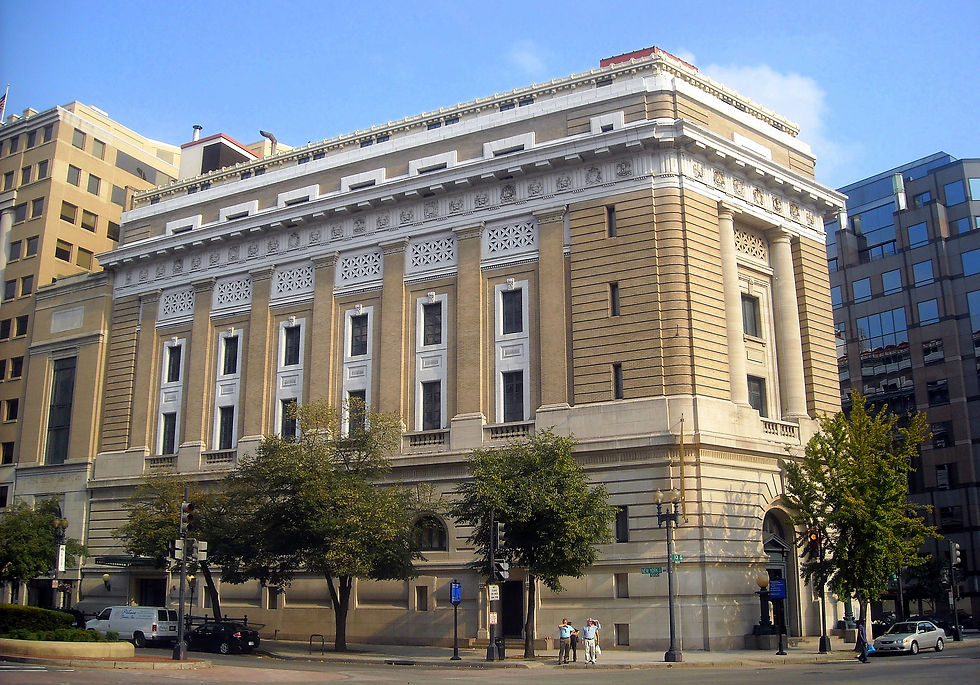A Brief Look at Women in European/American Art History
- Lucy

- Jul 30
- 7 min read

Recently, Melanie Buchleiter, who is the Interim Director of the IAIA's MFA in Cultural Administration, reached out to the New Mexico State Committee of the National Museum of Women in the Arts (NMC) to give a presentation about the organization to 30+/- masters' degree students who are interested in working in Tribal, Cultural, and Art Institutions.
It was an exciting proposal, and as Co-Chair of the NMC, I immediately said yes! Then, I formed a subcommittee of four people, plus myself, to create the presentation. It was a true collaboration, and in the end, we created something special. Here is some of the history of women in the arts in the Western art world (Europe and America) and how it led to the formation of the National Museum of Women in the Arts that we shared as part of the presentation.
Dear reader, make a cuppa tea and settle in, as this is a longer read but well worth the time.

Take a moment and ask yourself if you can name 5 women artists. If you can’t, you aren’t alone. A 2022 survey conducted by Katy Hessel, a British art historian and host of the fascinating podcast, “The Great Women Artists,” revealed that only 30% of 2,000 adults in England could name just three women artists.
Just under 50% of the world population is female, but a recent survey of the permanent collections of 18 prominent U.S. art museums found that the represented artists are 87% male and 85% white.
And in a sample of 1.9 million auction transactions in 49 countries, paintings by female artists sell at an unconditional discount of 42.1%.
Why?
There are a lot of reasons, all related to systematic patriarchy in our society. Reasons range from the general anonymity surrounding the women whose craft did not call for signatures and women taking their husbands’ last name to the fact that the men surrounding talented women, whether it be husbands, teachers, or art dealers, often obscured women’s identities and attributed their paintings to male artists.
Plus, prestigious art academies in Europe (ateliers) often barred women from enrolling, denying them formal training and access to crucial networks—this exclusion extended to artistic competitions and exhibitions, critical platforms for gaining recognition and securing commissions.

And it should be no surprise that woman artists were ridiculed and even tortured. The most well-known example of that is Artemisia Gentileschi, who learned to paint from her acclaimed father in Italy during the 1600s. One of his friends raped her and at the time, rape wasn't a recognizable offense; the issue was that, in 'deflowering' her, dishonoring the family and making her unmarriable. She demanded they go to court where she had to defend her testimony while being tortured with a sibille: which is a device/lie detector made of metal and rope, that tightened around her fingers and could have maimed her to the point she would never be able to paint again.

Through the centuries, this systematic misalignment of women artists essentially meant the erasure of women from the art historical canon, which eventually resulted in their erasure from history itself.
But women artists are resilient and developed strategies for dealing with the situation. First, some adopted a male pseudonym, which allowed them to circumvent institutional barriers and gain entry into the male-dominated art sphere.
Indeed, under the guise of a male identity, women could explore a broader range of subjects and styles, including those deemed inappropriate for their gender, such as nudes or politically charged themes.

However, while it provided immediate benefits, it also led to many women artists being written out of art history. Their contributions were either attributed to male artists or overlooked entirely.
Here are a couple of examples:
Rosa Bonheur: A 19th-century French artist, Bonheur achieved fame for her detailed animal paintings. Despite her success, some initially believed her works were the product of a man due to their "unfeminine" subject matter and excellence in execution.

“The Horse Fair” c. 1852 by Rosa Bonheur (1822 - 1899) Camille Rosalie Claudel: a French sculptor known for her figurative works in bronze and marble. Rodin was her teacher, mentor, and lover. Claudel could not get the funding to get many of her daring ideas realized due to their sexual element. Thus, she was forced to depend either on Rodin or collaborate with him and let him get the credit as the lionized figure of French sculpture. Rodin consequently signed a number of her works. She died in relative obscurity.

In the 18th century, women were legally minors, chattels. The signature of married women painters was subject to that of their husbands, because when they got married, they lost their legal capacity. Elisabeth Vigée Le Brun was reminded of this minority status when she presented herself to the Royal Academy. She could not be admitted because she was the wife of a painting merchant.
And Elizabeth Sophie Cheron got around this issue by signing her engravings with her surname and reducing her married name to initials.
Another strategy for female artists was to create exceptional artwork in the genre they were allowed to work in, specifically still life painting or domestic scenes.
In the Western Art world, learning to draw the human body was a cornerstone of art education, but it was deemed improper for women to see nude bodies. So they were barred from academic art programs. Instead, they were only allowed to draw/paint still life’s which were considered the lowest artistic genre.
Still life […] became the remit of artists who, because of their gender, were denied access to essential lessons on anatomy. They excelled in these representations […] but for artists who were serious about their craft and eager to professionalise, it was not enough. Accusations of amateurism could never be meaningfully thrown off if women remained unable to draw the human form, without which none of the higher genres (religious or history painting or portraiture) could be attempted. Despite entering art schools in increasing numbers, women found themselves painting more or less the same subjects as their forebears under the same aegis of politeness and religious dogma.” - Rebecca Birrell
The practice of painting still life certainly was convenient, as Birrell states, “for women without the time, money or confidence to hire models or occupy a studio, its subjects were readily available, and once domestic duties called, the objects were small enough to be stores (or concealed) with ease”. Nonetheless, “still life largely continued to represent a form of failure, bondage and thwarted ambition,” Birrel argues.
And many female artists excelled. For example:
Rachel Ruysch (1664-1750) was a Dutch artist who mastered both drawing and painting, offering playful compositions that lack the statuesque stiffness of other such works. Moreover, her understanding of light and color, coupled with her asymmetric flower arrangements, left the impression of the bouquet having been arranged on a whim, spontaneously, and rigidly staged.

Josefa de Ayala, commonly called Josefa de Óbidos (1630-1684). She is the only known Spanish woman artist to be active on the territory of Portugal during the 17th century. She specialized in still-life paintings and religious themes that feature darker, heavier, and more baroque tones are very similar to what her male counterparts created.

Mary Cassatt (1844 - 1926) was an American painter and printmaker. She lived much of her adult life in France and exhibited among the Impressionists. Her work focused on women and children in domestic daily life, which was not considered a “serious” topic for art at that time. She was often critiqued for her subject matter, and her art was dismissed as too feminine.

However, overall, women (particularly those not affluent enough to attend prestigious art schools or develop art world connections), their art, and their narrative existed completely outside of the established art world.
The 20th century offered some breakthroughs for women artists through Surrealism and Abstract Expressionism. Here, women could explore their identities and question gender roles. Artists like Frida Kahlo and Georgia O’Keeffe became emblematic of this transformation, using their art to reveal personal narratives and confront issues of gender and identity.
And in 1985, an anonymous group of female artists called the “Guerrilla Girls” formed to protest the underrepresentation of women in major museums and galleries. They used eye-catching posters and bold public actions to expose the inequalities faced by women artists.

However, as you saw from the beginning statistics, the problem of women being sidelined in the art world still exists today. Just ask any female artist about their experience in finding gallery representation to attracting interest from a museum, or finding a collector.
Despite all the women making art throughout history, art history, as it has traditionally been written, has focused heavily on male artists and their contributions, often ignoring or minimizing the achievements of women. The most popular art history book used in college has been “The Story of Art” by E. H. Gombrich, which is 688 pages. The first edition was published in 1950, and it featured no women artists. Subsequent editions, including the 16th, which was published in 1998, included only one woman artist, Käthe Kollwitz.

All of this led to Wilhelmina Cole Holladay and Wallace F. Holladay, the founders of the National Museum of Women in the Arts, to ask, “Where are all the women artists?”

They began collecting art in the 1970s, just as scholars and art historians were beginning to discuss the underrepresentation of art by women and various racial and ethnic groups in museums.
Fact: In 1971 women represented 11% of all art shown and bought. Enter 2025, and women now only represent 12.6%
Among the first to apply this revisionist approach to collecting, the Holladays committed themselves to assembling art by women. By 1980, Wilhelmina Cole Holladay began to devote her energies and resources to creating a museum that would showcase women artists, and the Holladay Collection became the core of the institution’s holdings. In 1981, they founded the very first museum in the world dedicated to women artists - The National Museum of Women in the Arts.

Here are actions we can each take to make a difference:
Promote organizations and institutions that strive for gender equality across all industries
When exhibitions are unequal, speak up
Support women artists, buy their art, and don’t ask for a discount
Serve on museum boards and advocate for equality in collections and exhibitions
Ask to see women artists when visiting galleries
Educate yourself about the issue
Go to the NMWA Advocacy web page: https://nmwa.org/support/advocacy/
Follow NMWA on social media for more information and action items.
Read move about the subject:
"Representing Women" by Linda Nochlin,
"Women, Art, and Society" by Whitney Chadwick,
"The Trouble with Women Artists" by Laure Adler & Camille Viéville, and
“Why Have There Been No Great Women Artists?” by Linda Nochlin





Comments